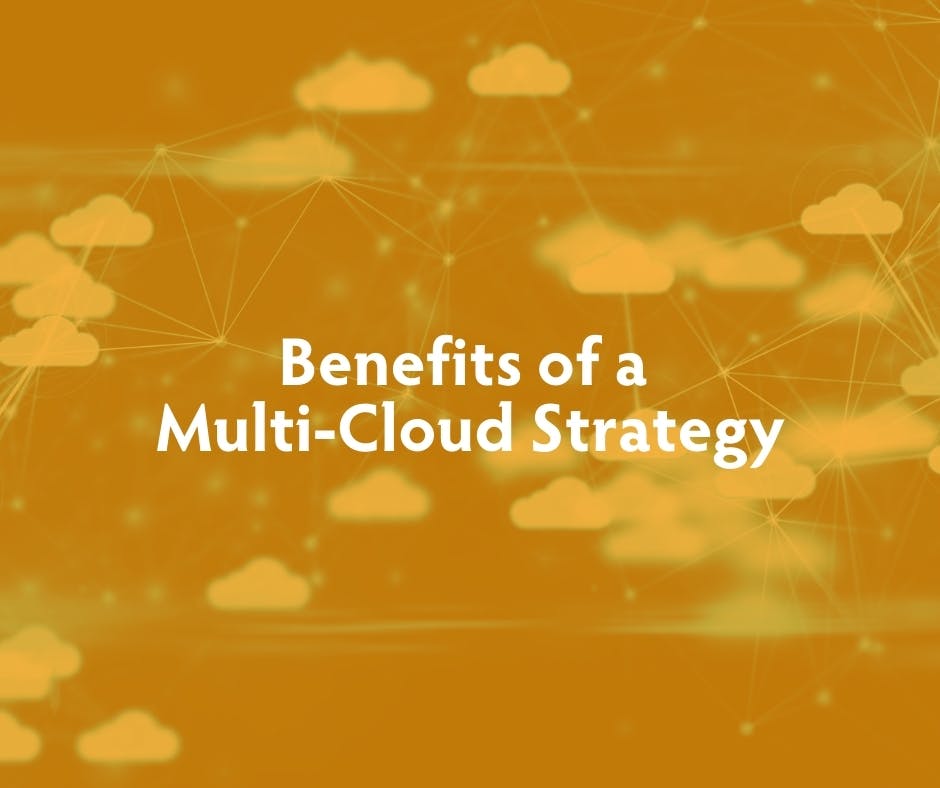From workloads and applications to optimizing feature sets, there’s much to consider when making the switch to a multi-cloud strategy. 2021 is predicted to be the year of the multi-cloud strategy, and by 2022 specialists expect nearly 90% of enterprises across the globe to rely heavily on a multi-cloud approach.
In fact, most big-wig enterprises are already using multiple cloud providers to take advantage of this unrivaled approach. When you’re an organization utilizing cloud services across multiple geographies, it’s easy to understand why finding a single public cloud infrastructure provider can be challenging.
This is where a multi-cloud strategy comes into play. The combination of benefits associated with this strategy is boundless but can be complicated to navigate without the right support. That’s why SmartFile is here to help manage your cloud costs and come up with the best strategy for you and your business. We’ll guide you through the process so you can stop relying on a single cloud provider and better achieve your business goals.
What is a Multi-Cloud Strategy?
To fully grasp the distinct benefits a multi-cloud strategy offers, it helps first to understand what this approach is all about. A multi-cloud strategy allows enterprises to use more than one cloud platform to deliver a specific service or application for starters. This strategic approach makes it possible for businesses to use public, private, and even a combination of the two clouds to deploy their applications in a single network architecture.
In recent years, many companies have found that leveraging multiple cloud technologies at once is the most efficient way to minimize the lingering risk of downtime and data loss. Below, we’ll discuss why so many enterprises are choosing a multi-cloud environment and how your overall business operations can benefit from this strategy.
The Benefits of a Multi-Cloud Strategy
Since a multi-cloud situation combines the best services each platform provides, businesses benefit from a customized infrastructure that adheres to their set goals. Depending on what your organization is trying to achieve, you may want to look into all the ways a multi-cloud environment can set you at a distinct advantage. These include the following:
Superior Performance
A multi-cloud strategy gives companies the ability to select different cloud providers based on their unique technical and business needs. Some providers are simply better at certain tasks than others, and a multi-cloud environment allows enterprises to combine the best services that each platform offers.
For example, business owners can choose a cloud provider that specializes in large data transfers while also working with a different cloud provider for its high upload speed. In using multiple providers, you have the freedom to choose between different applications that best match up with the unique aspects of your business.
Increased Security

If you’ve ever heard the saying “don’t put all your eggs in the same basket,” the same sentiment applies here. Because each cloud provider handles their own infrastructures’ security, they each work to ensure your data is well protected. Most notably, a multi-cloud strategy provides top-notch security when it comes to Distributed Denial of Service (DDoS) attacks.
This threat has grown in recent years and is something business owners want to make sure they are protected against. Multi-cloud architecture focusing on cloud security can significantly reduce the likelihood of DDoS campaigns by instantly shifting workloads to additional cloud environments. This type of resiliency simply wouldn’t be possible in a single-cloud architecture.
Avoid Vendor Lock-In
When the entirety of your cloud architecture occupies only one cloud provider, there’s a limit to your data control. And if you don’t like the services or costs of your single-cloud provider, unfortunately, you won’t have much leverage to make any changes—no matter how much sense they make to you and your business operations.
However, when you switch to a multi-cloud strategy, you can get the different services you desire from more than one vendor. By being able to utilize multiple cloud providers to meet your needs and preferences, you can harness the power of the cloud and get the most out of your various partnerships.
Competitive Pricing
One of the most significant reasons business owners look into a multi-cloud strategy is for its cost-saving qualities. When you aren’t held back by vendor lock-in, you’re free to start prioritizing how your money is being spent. This means you have the liberty to go all out on a particular IT solution for your core business while simultaneously looking into more affordable options for those less important business processes.
Multi-cloud strategies are becoming a competitive market, and with this stark competition comes more optimal price offerings. Business owners can now compare cloud providers and determine which rates best suit their unique IT needs. You can choose one provider based on payment flexibility and another on adjustable contracts.
Data Governance

One of the main benefits business owners are looking for in a multi-cloud strategy is data governance. When you opt for a multi-cloud environment, you gain better access to operational control and the overall monitoring of your IT systems.
A multi-cloud environment promotes the efficient and effective use of information to help a business better achieve its goals. You can look forward to the standardization of processes, procedures, roles, metrics, standards, and policies, as well as the ability to share tools across multiple cloud providers.
Cloud Optimization
If there’s one sure-fire way to improve an organizations’ business processes, it’s through efficiency. Multi-cloud strategies are known for their optimization qualities. By leveraging multiple best-in-class cloud providers against each other, you always know that your business’s most important aspects are well taken care of.
Not to mention, a well-thought-out multi-cloud strategy allows a seamless shift between cloud providers. This gives business owners the ability to shift from one environment to the next, ensuring you can always max out on the most optimal costs, performance, and more.
Impressive Flexibility
In the past two years alone, 90% of the world’s data was created. With this in mind, multi-cloud storage offers a secure place for information to be processed and stored with real-time syncs and accurate automation. A multi-cloud environment is not only the perfect solution for storage, security, and infrastructure, but it also offers unmatched scalability.
The flexibility of a multi-cloud strategy, for example, allows businesses to assess their storage needs and make adjustments when needed. With multi-cloud-based solutions, it is possible to dial your services up or down depending on how your business reacts to economic or industry fluctuations.
Better Productivity
A multi-cloud environment allows your IT team to automate tasks and effectively manage many different applications. By splitting services between multiple types of cloud computing workflows, business owners can expect to see an increase in productivity and efficiency across all operations.
This means your team will be able to do more with less time and focus their energy and resources on big-picture growth strategies rather than troubleshooting issues. If productivity optimization is something you’re looking to improve, a multi-cloud environment can help.
Risk Mitigation
A bonus when it comes to adopting a multi-cloud strategy is enhanced risk management. If you’re working with an on-prem system, a malicious attack can spell devastation for your business. Even in non-malicious circumstances, things like retail transaction errors and service outages can put your business at risk.
Multi-cloud strategies can help mitigate these instances by instantaneously routing these services to backup cloud environments that can easily take on the load. And once any issues are resolved, your services can easily be transferred back to their primary environment.
Effective Compliance

For businesses that handle a plethora of private or personal information, you always want to ensure you’re up-to-date on compliance standards. Each cloud provider in a multi-cloud strategy will have its own plan for maintaining compliance standards.
Multi-cloud environments can be optimized to increase storage capabilities and decked out with enhanced security features for ultimate data protection. Better yet, with increased efficiency and cataloging, you won’t have to worry about important information getting lost or into the wrong hands.
Improved Network Performance
A multi-cloud strategy allows business owners to create a high-speed, low-latency infrastructure that can be managed by their existing IT system. By permitting businesses to expand their networks to multiple providers, they can improve application response time, providing a better user experience.
Achieving a highly optimized interconnection is possible when you utilize faster, private links between multi-cloud service providers. Business owners also love the fact that improved network performance also reduces overall costs.
Architectural Upgrades
If you’re working with out-dated and confusing cloud environments, you can look forward to more modern and aesthetically-pleasing multi-cloud options. With the modernity that comes along with a multi-cloud structure, you can expect a more modular style.
Businesses have the ability to build powerful and secure cloud environments beyond the traditional infrastructure. Multi-cloud architecture that utilizes private, public, and hybrid cloud services is a solid investment for business owners, especially for enterprise-level and mid-marketing organizations.
Disaster Avoidance
When you have a multi-cloud system, you can avoid a disaster at a much higher success rate. Outages happen without warning. Human error from time-to-time is unfortunately unavoidable. When a particular web service host fails, a multi-cloud strategy allows businesses to continue operation with other platforms in their multi-cloud environment.
Multi-Cloud storage ensures businesses are set up with the appropriate computing resources and data storage to completely avoid downtime no matter the scope of the issue.
Rely On SmartFile Multi-Cloud Strategies
SmartFile is here to ensure business owners are set up with cloud file storage and transfer solutions that cater to their business needs. You can access your files from anywhere through our secure cloud and provide ultimate control for administrators. SmartFile offers the perfect blend of user and IT features to fit within your multi-cloud strategy.
